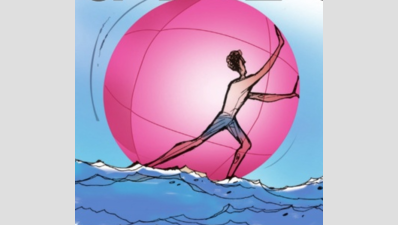- News
- City News
- kochi News
- Closing the coverage gap
Trending
This story is from October 20, 2016
Closing the coverage gap
Close to 57% Keralites are not covered by any health insurance scheme. As a result, when they are hospitalised majority of them have to either withdraw money from their savings or borrow.

(Representative image)
KOCHI: Close to 57% Keralites are not covered by any health insurance scheme. As a result, when they are hospitalised majority of them have to either withdraw money from their savings or borrow.
As per the National Sample Survey Office's (NSSO) Health in India report 2016, only about 3.5% people in Kerala have received reimbursement in full or part for expenses during hospitalisation.While 2% people in rural Kerala received reimbursement for expenses during hospitalisation, in urban Kerala it was 5.9 %.The reimbursement is from various government-funded insurance schemes, employersupported health protection, medical insurance schemes and other group schemes offered by agencies like Kudumbasree.
Even as the cost of hospitalisation is increasing on an average by almost 20% in private hospitals, people opting for private health insurance in the state stands at just 1.2%. This is crucial as majority of Keralites prefer to go to a private hospital. The average total medical expenditure in private hospitals is about Rs 25, 411 in urban areas and Rs 21,808 in rural areas, a phenomenon fuelled by high cost of medicines, diagnostic tests and doctor's fee.
The average period a person is admitted in a hospital is one week, with majority being admitted due to infections, followed by injuries or accidents, cardio vascular or respiratory problems.
With no health insurance to fall back on, almost 67% are forced to withdraw money from their savings during hospitalisation; 23.4% borrow from banks and other sources; 0.3 % sell their assets and 9% borrow from friends and relatives.
The data doesn't reveal the complete picture as many in Kerala still go for group medical insurance offered by institutions like Kudumbasree, instead of individual medical insurance policies, as they believe that the benefits are more and the rates less. “Also people generally have a feeling that nothing will happen to them. Due to this complacency many tend to not take a medical insurance,“ said K Jothinathan, deputy general manager, Oriental Insurance.
As per the National Sample Survey Office's (NSSO) Health in India report 2016, only about 3.5% people in Kerala have received reimbursement in full or part for expenses during hospitalisation.While 2% people in rural Kerala received reimbursement for expenses during hospitalisation, in urban Kerala it was 5.9 %.The reimbursement is from various government-funded insurance schemes, employersupported health protection, medical insurance schemes and other group schemes offered by agencies like Kudumbasree.
Even as the cost of hospitalisation is increasing on an average by almost 20% in private hospitals, people opting for private health insurance in the state stands at just 1.2%. This is crucial as majority of Keralites prefer to go to a private hospital. The average total medical expenditure in private hospitals is about Rs 25, 411 in urban areas and Rs 21,808 in rural areas, a phenomenon fuelled by high cost of medicines, diagnostic tests and doctor's fee.
The average period a person is admitted in a hospital is one week, with majority being admitted due to infections, followed by injuries or accidents, cardio vascular or respiratory problems.
“In today's world, it is very difficult to survive without a medical insurance, especially with private hospitals escalating their prices by almost 20% every year. I believe that in Kerala more than 75% people are covered under some sort of medical insurance scheme,“ said John Philip, chief regional manager, New India Assurance CO Ltd.
With no health insurance to fall back on, almost 67% are forced to withdraw money from their savings during hospitalisation; 23.4% borrow from banks and other sources; 0.3 % sell their assets and 9% borrow from friends and relatives.
The data doesn't reveal the complete picture as many in Kerala still go for group medical insurance offered by institutions like Kudumbasree, instead of individual medical insurance policies, as they believe that the benefits are more and the rates less. “Also people generally have a feeling that nothing will happen to them. Due to this complacency many tend to not take a medical insurance,“ said K Jothinathan, deputy general manager, Oriental Insurance.
End of Article
FOLLOW US ON SOCIAL MEDIA











